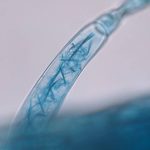A new formulation of the Envita bacterium distributed by Syngenta is expected to help farmers tap into more of the nitrogen crops need throughout the season — without adding more fertilizer.


Envita Dry ‘gives plants ability to source additional nitrogen from atmosphere’

Strategic application can reduce N losses and boost productivity

Challenges remain for products to achieve their hoped-for potential

The novel crop combination is getting an even more novel test of its utility

Study provides more proof that pulse crops contribute to nitrogen use efficiency

Plus, never do this with inoculant

Bayer bets big on a future where crops are designed to fertilizer themselves

Natural soil molecules recruited to help increase pulse crop growth and yield
